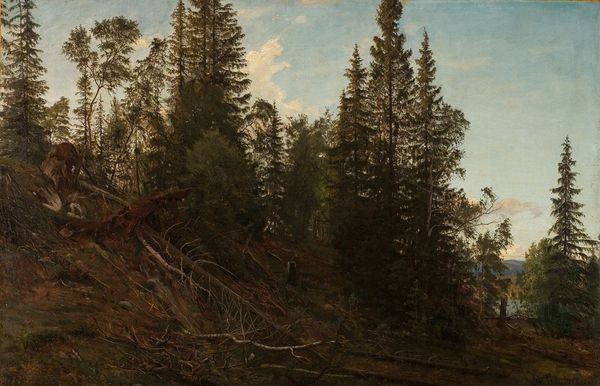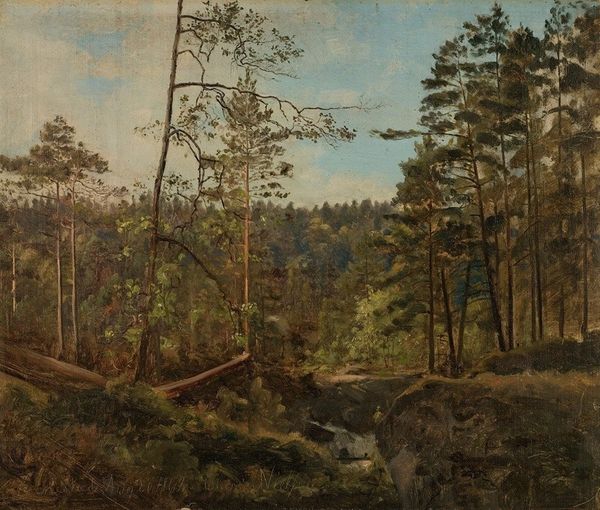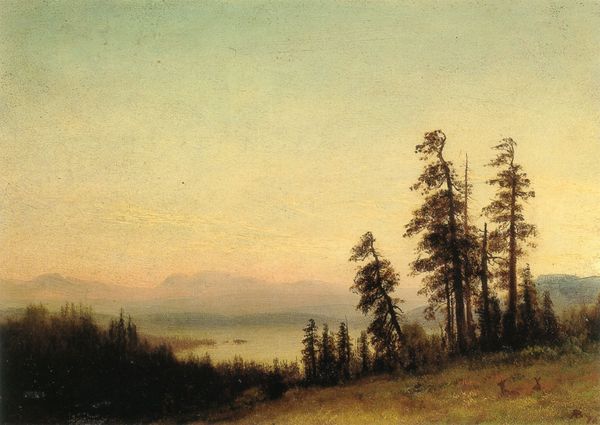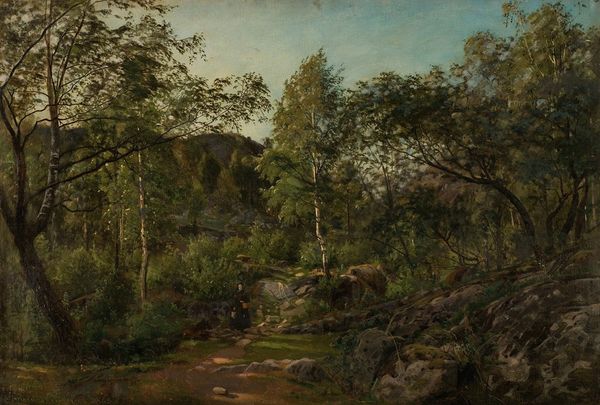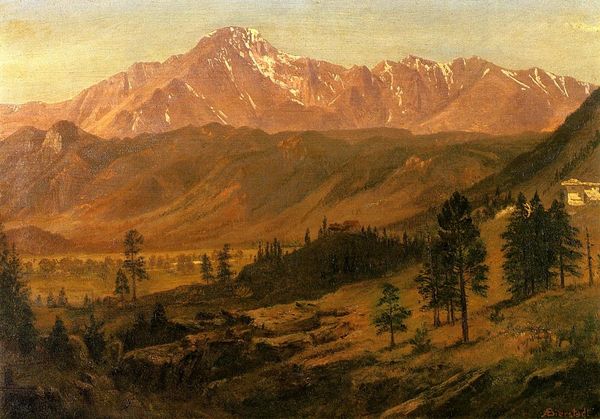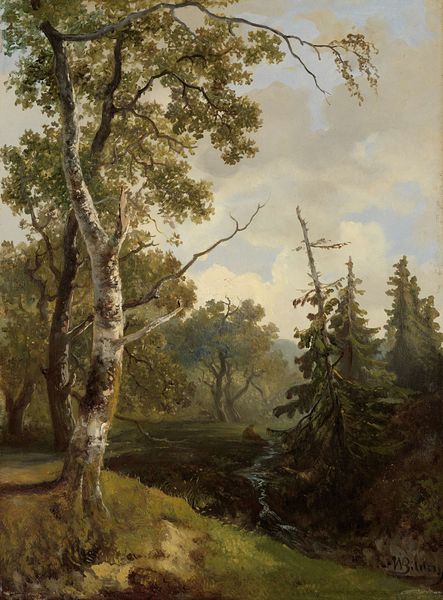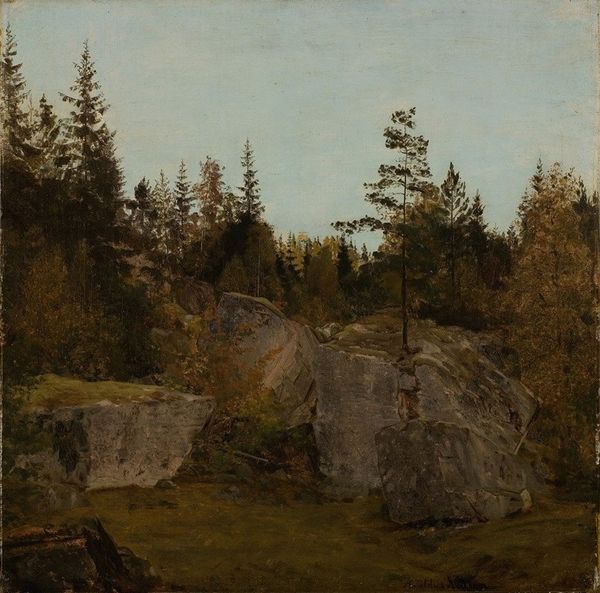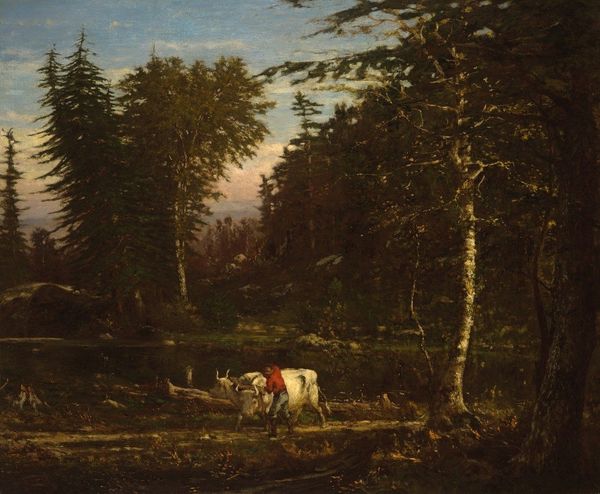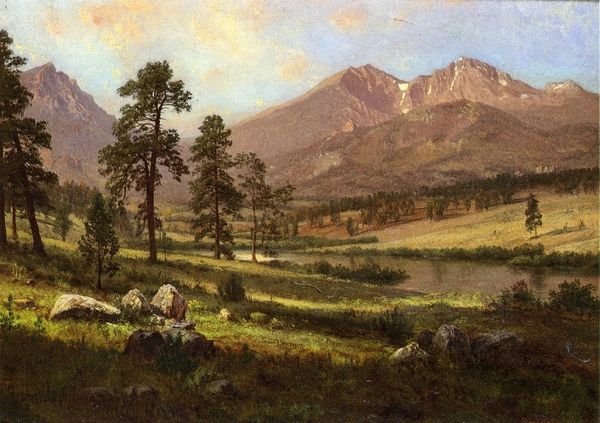
painting, oil-paint
#
painting
#
oil-paint
#
landscape
#
nature
#
oil painting
#
naturalism
#
realism
Copyright: Public Domain: Artvee
Editor: This is Amaldus Nielsen's "I Vingeråsheia, Telemark," an oil painting from 1866. I find it has such a serene, almost melancholy feel to it, and it appears almost untouched. How do you interpret this work, especially considering the time it was made? Curator: It’s interesting you mention the feeling of untouched nature. The mid-19th century in Norway was a time of burgeoning national romanticism, where artists like Nielsen sought to define a specifically Norwegian identity, distinct from Danish or Swedish influence. Landscape painting played a vital role in constructing this identity. Editor: So the painting becomes more than just a landscape; it's a statement. Curator: Precisely. Think about who was likely viewing this painting: a growing urban middle class eager to connect with the ‘authentic’ Norway they imagined in these rural scenes. It’s also interesting to note the absence of prominent human figures. Why do you think Nielsen chose to represent the landscape in this way? Editor: Perhaps he wanted to emphasize the power and grandeur of nature itself, making it almost a spiritual experience, free from everyday concerns. Or perhaps the inhabitants didn't fit the nationalistic narrative. Curator: A great point! This landscape isn't simply 'nature'; it's carefully constructed imagery designed to evoke specific feelings of national pride and belonging, even if it excludes or idealizes certain aspects of reality. Editor: That’s a really helpful way of looking at it; the social context really does shift my perspective. Thanks! Curator: My pleasure. Thinking about the public role of art always enriches our understanding.
Comments
No comments
Be the first to comment and join the conversation on the ultimate creative platform.
